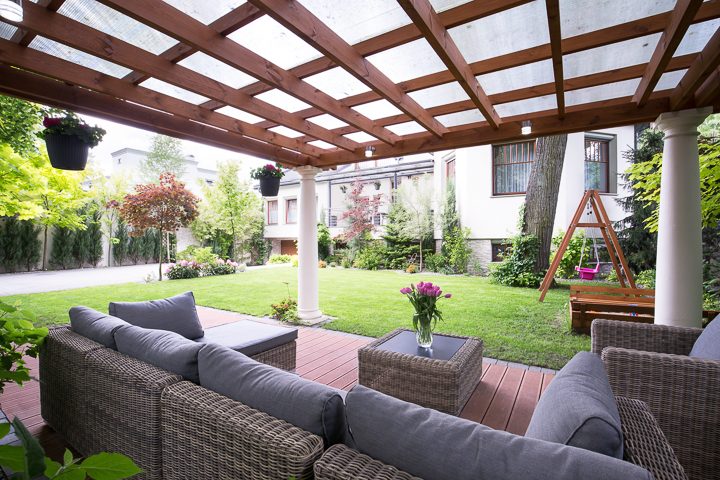When you rent a dumpster, the cost can vary depending on several factors. Some companies charge a flat rate that includes all fees, while others offer variable pricing based on debris type and weight. This can add up quickly, so it’s important to do your research before choosing a provider. Whether you’re looking for a local company or national franchise, you’ll want to collect quotes and compare going rates to find the best deal.
One of the most significant factors in the cost of dumpster rental is where you live. The cost of living is much higher than, and this can be reflected in the price of trash disposal. In addition, different states have different landfill fees, so be sure to factor these into your total costs. Contact Dumpster Rental Baltimore now!

Another factor is the size of your dumpster. Choosing the right size will save you money in the long run. If you overestimate your waste volume, you’ll end up paying more than you need to. Similarly, if you’re disposing of heavy waste, the dumpster will be heavier and will cost more to haul away.
Some dumpster rental companies include a set amount of tonnage in their prices, and if you exceed this limit, you’ll be charged extra. If you’re disposing of hazardous materials, the cost will also be higher because these items need to be handled differently than other types of waste. Finally, if you decide to cancel your order at the last minute, there may be additional charges.
Dumpster rentals are a great option for a variety of projects, from major construction to household cleanouts. They’re especially useful for major home renovations, roof replacements, and moving. If you’re planning a large project, it’s a good idea to rent a dumpster early so that you can get it delivered before your work begins.
The cost of dumpster rental can vary depending on a number of factors, including the type and brand of the container, and how much time you’ll be renting it for. A local, family-owned company is likely to have lower prices than a national chain. A local company will also be able to answer your questions more thoroughly and provide helpful advice on dumpster sizes.
Legality
The legality of dumpster rental depends on a number of factors, including local regulations and zoning laws. It’s important to understand these requirements before you rent a dumpster. These regulations can affect placement restrictions, weight limitations, and prohibited items. In addition, it’s crucial to choose the right size dumpster. If you rent one that’s too small, it will cost more than if you had rented a larger container. Finally, you may need a permit for your dumpster if it’s placed on public property.
While dumpster rentals are a valuable service for businesses and homeowners, they can also be an inconvenience if not used properly. Many people illegally dump trash into the dumpsters of others, which can lead to serious problems. Illegal dumping can be caused by a number of different things, from simple mistakes to deliberate acts. In most cases, the perpetrators don’t have malicious intent, but they can still be fined for their actions.
To avoid these problems, it’s important to make sure you understand the legality of dumpster rental before hiring a company. To do this, research the local regulations and contact a reputable waste management company to learn more about how to handle your garbage responsibly. This will ensure you stay within the law and avoid costly penalties.
It’s also important to keep in mind that there are certain types of waste that are not allowed in a dumpster rental, such as hazardous materials and medical waste. These substances should be disposed of by a professional, and should never be put in the dumpster. This could result in hefty fines and even criminal charges.
It’s important to be aware of the local regulations regarding dumpster rentals, as they can vary significantly between cities and states. Many municipalities require permits for dumpsters that are located on public property, and adherence to these rules is essential for both your business and the community’s well-being. In addition to permitting, local regulations also address time limits and size restrictions, which can help ensure that the dumpsters aren’t overcrowded or obstructing traffic flows. By following these guidelines, you can ensure that your dumpster rental business operates legally and efficiently.
Applicability
In many areas, dumpster rental regulations are established to ensure proper waste disposal and protect the environment. These regulations cover issues such as location restrictions, time limitations, acceptable waste materials, permits requirements, and safety precautions. By adhering to these guidelines, individuals can minimize environmental harm and promote safe construction projects. This also helps prevent conflicts with neighbors and encourages harmonious coexistence between residential and commercial projects.
Location restrictions are one of the most important elements of dumpster rental regulations, and they vary greatly by region. For example, in some cities, the placement of dumpsters is prohibited on sidewalks or roadways, and specific distances must be maintained from intersections and fire hydrants. In addition, the location of a dumpster must be accessible for delivery and pick-up. To avoid violations, it is essential to consult local authorities and rent a dumpster that complies with all applicable laws.
Dumpster rental regulations also dictate what type of waste can be placed in a dumpster, and these rules may differ by city and state. For instance, a dumpster that contains food waste may not be allowed in certain areas, while some states require that the contents of all dumpsters be recycled. Additionally, regulations might apply to the transportation of waste, influencing how far away it can be transported from its source.
It is important to understand these regulations to avoid violating them, as doing so can result in fines and penalties. In addition, violations can cause project delays and increase costs. To avoid these problems, it is important to rent a dumpster that has a flexible rental duration and is easily accessible.
Other important aspects of dumpster rental regulations include rental time limits and size limitations. During renovations, it is common to produce a significant amount of debris that must be disposed of. For this reason, it is crucial to consult with your local authorities or dumpster rental company about the required size and timing of your project.
For example, if you are performing home renovations, you will likely need a larger dumpster to contain all of the construction and demolition waste that will be generated. Likewise, large yard projects can generate a lot of waste, including sod and tree stumps. To avoid wasting money, it is important to choose a dumpster that will accommodate the total volume of your waste.
Safety
Dumpsters are commonly used in construction sites and renovation projects, but accidents can occur due to improper usage and lack of awareness. These injuries and incidents can be costly, so it’s important to make safety a priority and implement essential best practices. This will not only protect workers but also promote a safer work environment.
First and foremost, it’s important to know what you can and cannot put in the dumpster. Things like hazardous household cleaning agents should never be placed in a dumpster, as they’re not only a hazard to the environment, but can also do serious damage to your skin, eyes and lungs if touched or inhaled. Also, it’s important to be mindful of the weight limit of the dumpster, as overfilling it can cause structural strain and even tipping accidents.
It’s also important to ensure that the dumpster is properly secured during use. This will prevent unauthorized access and tampering, and is especially important on public job sites. In addition, clear communication and regular briefings on safety protocols can help to prevent accidents and promote a safer workplace.
When renting a dumpster, it’s vital to do your research and find out what other customers have said about the company. This will give you a good idea of what to expect and whether or not they are the right fit for your needs. It’s also a good idea to ask about any hidden fees that may be associated with the rental.
Finally, it’s important to always follow the dumpster rental company’s guidelines for placing waste. This includes ensuring that the dumpster is placed on a flat surface and away from any obstacles, such as overhead wires or structures. It’s also important to keep the dumpster out of public areas, and to avoid putting it near bodies of water or other natural resources.
In addition to following the dumpster rental company’s guidelines, you should also be aware of any zoning regulations that may apply to your area. If you have questions, contact your local government to learn more. This will not only help protect the environment, but will also protect you from unnecessary penalties and fines.


